I promised I would have only ONE MORE post on Angoulême and here it is! Calvin Reid went to this year fest and has his full report for PW, including of course, all the controversy and insults to cartoonists. However bured in all of that, there was also a comcis festival, and the program to […]
Viewing: Blog Posts Tagged with: ted adams, Most Recent at Top [Help]
Results 1 - 6 of 6
Blog: PW -The Beat (Login to Add to MyJacketFlap)
JacketFlap tags: World Comics, IDW, ted adams, calvin reid, Add a tag
Blog: Galley Cat (Mediabistro) (Login to Add to MyJacketFlap)
JacketFlap tags: Publishing, art, Comic Books, Ted Adams, Add a tag
 The team at IDW Publishing will be moving its headquarters. In addition to setting up the new office space, IDW plans to launch the San Diego Comic Art Gallery (SDCAG).
The team at IDW Publishing will be moving its headquarters. In addition to setting up the new office space, IDW plans to launch the San Diego Comic Art Gallery (SDCAG).
The gallery will feature artwork displays, working artists on the premises, and a retail shop. Harry L. Katz has come on board as the curator for the SDCAG.
CEO Ted Adams gave this statement in the press release: “We’ve been expanding rapidly, and simply have run out of room. At the same time, we’ve been looking for a space that more accurately reflects who we are as a company. When we started talking with the NTC, it became evident immediately that this would be a perfect fit. And with the gallery, we’re going to be able to show the community, and the world, just who IDW is.”
Add a CommentBlog: PW -The Beat (Login to Add to MyJacketFlap)
JacketFlap tags: Disney, Kibbles 'n' Bits, toy fair, Frozen, paul rivoche, Top News, ted adams, cal macdonald, michael golden, the cackler, traveling stories, Add a tag
I went through the old mailbag and found some newsy bits I had previously missed.
§ IDW’s CEO/Publisher Ted Adams is joining the Board of Directors for Traveling Stories, a San Diego based non profit that builds libraries in poor cities around the world and provides story coaching at travelling story tents. Okay does it get better than that? you can find out more and how to help here.
“I’ve always been an avid reader, even when I was little. As a publisher, I’m excited to give kids in underprivileged areas around the world the same literary experience I was lucky enough to have,” Adams stated.
With this development, Adams has a platform for sharing his lifelong passion for reading on a global scale and further expanding IDW’s reach in the book-loving community.
If you want to join Adams in supporting Traveling Stories, visit www.travelingstories.org to sign up for updates about the organization and initiatives he is working on. You can also join him in becoming a Reading Warrior and donating $10 per month so Traveling Stories can continue to give children access to books. For a limited time, those who become a Reading Warrior will receive a free Traveling Stories t-shirt of their choice and a free IDW book.
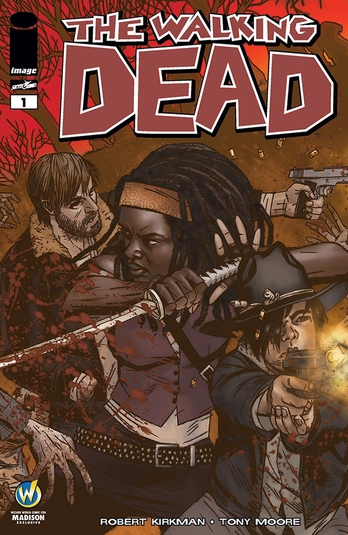
§ Michael Golden is creating limited edition variant covers for The Walking Dead #1 which are available at various Wizard Worlds. Here’s the latest, for Wizard World Comic Con Indianapolis, February 13-15. Everyone gets one FREE (While supplies last). VIP attendees will receive an additional black & white sketch version of the comic.
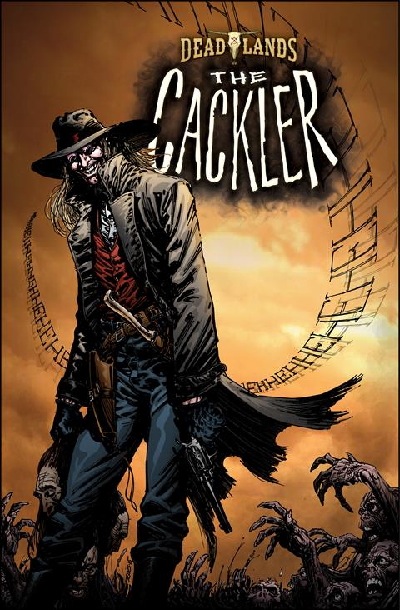
§ Visionary Comics is running a kickstarter for a comic book called The Cackler. It’s amazing that no one came up with that name before. The world needs a Cackler. (And it’s already been funded.)
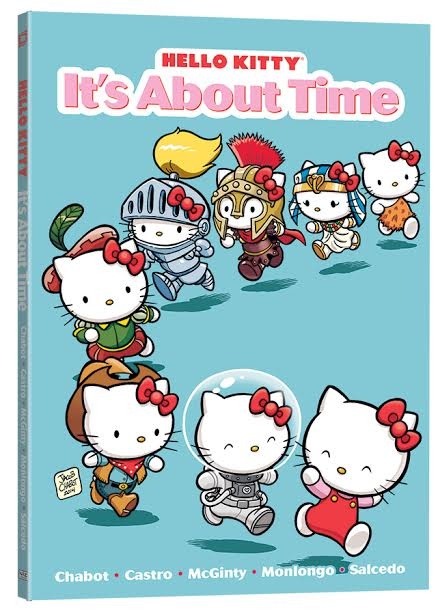
§ Viz has announced a new Hello Kitty original graphic novel HELLO KITTY: IT’S ABOUT TIME, with art by Jacob Chabot, Ian McGinty, Jorge Monlongo, and Giovanni Castro, and special guest artist Erica Salcedo. “Past, present or future, Hello Kitty and her friends are having a blast!”
§ Artist Paul Rivoche dropped us a line to let us know he won both the Gold and Silver medals in the “Graphic Novels/Comic Books category of the Society of Illustrators of Los Angeles (SILA) Illustration West 53 competition. (All winners shown here.)
The Gold award is for the cover to my graphic novel collaboration with Amity Shlaes and Chuck Dixon, “The Forgotten Man Graphic Edition”, adapting her bestseller of the same name. The other, Silver award, is for my two-page comic contribution titled “Little Nemo In Planeland”, which I wrote and drew for “Little Nemo: Dream Another Dream”, published by Locust Moon Press.
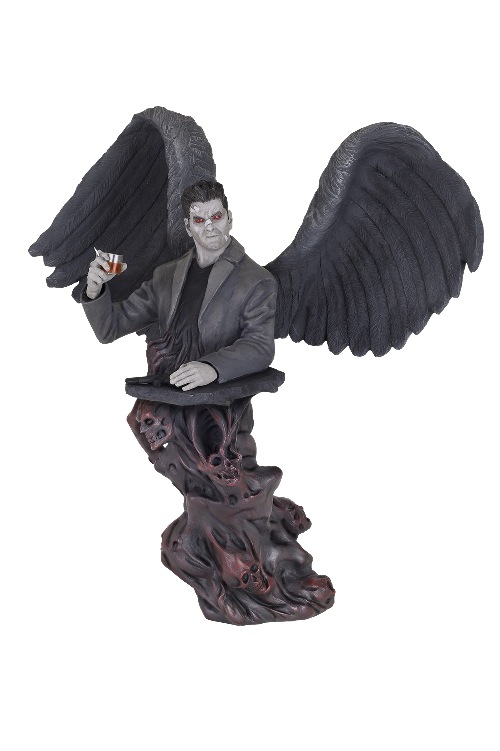
§ Toy Fair is coming!!! Oh boy. Dark Horse will debut a new bust of Criminal Macabre’s Cal McDonald there. It’s designed by William Paquet. Cal MacDonald was created by Steve Niles and he’s a hardboiled supernatural investigator type.
The bust measures a big 14 inches tall. Packaged in a full-color box, with a certificate of authenticity signed by both Niles and Paquet, this hand-painted, numbered piece is limited to only 375 copies. Available August 2015 for $149.99.
The prototype will be revealed at the Dark Horse booth, #4837, at Toy Fair 2015, held February 14–17 at Jacob Javits Center in New York City.
Additionally, Dark Horse will produce a special rare winged Cal McDonald variant bust.
§ A lot more Toy Fair news and previews can be found at the Idle Hands blog.
§ FROZEN…one of the most successful and beloved movies of all time, #5 on the ALL TIME WORLDWIDE BOF OFFICE LIST. And of course, there will be more Forozen, starting with with short “Frozen Fever,” in which Anna’s birthday is threatened by a COLD, which sends her powers into sneeze mode. Can Elsa and Kristoff makes sure it’s jjsut a big party? (Maybe they should call Hello Kitty.) Here’s some stills and a featurette. The short debuts on March 13th in front of Cinderella, and the gang is all back: Kristen Bell, Idina Menzel, Jonathan Groff and Josh Gad and directors Chris Buck, Jennifer Lee.
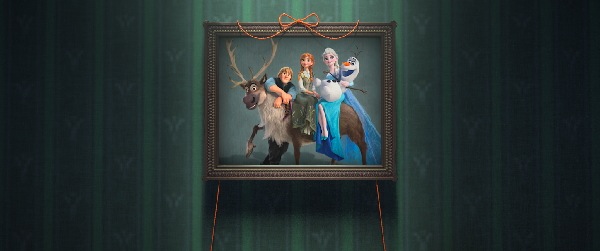
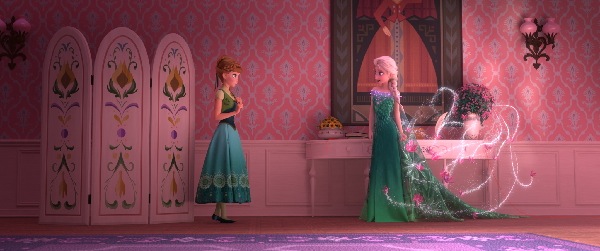
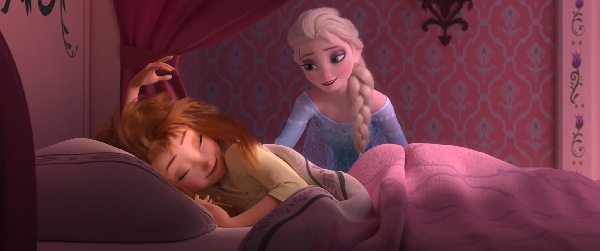
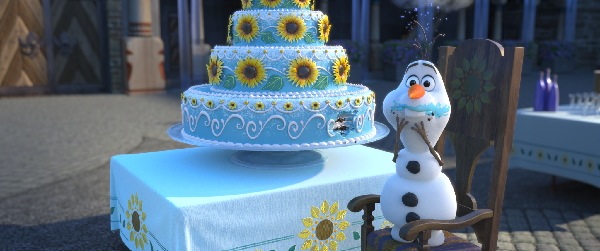
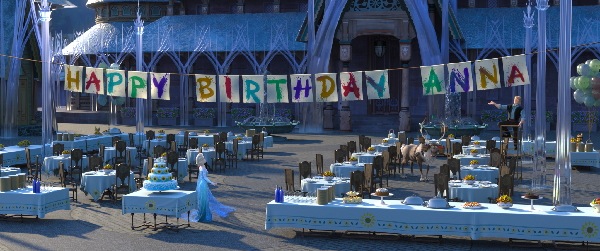
I laughed when I opened this, but it’s brilliant. Thanks for not giving them to us at ComicsPRO @ValiantComics pic.twitter.com/59ZLcQ8Y7p
— Pittsburgh Comics (@PghComics) February 3, 2015
§ Finally: ComicsPRO the annual retailer meeting is also coming, and Valiant came up with perhaps the best promotion evah: Ninjak boxcutters. Might be tought to fly with those, so be sure to put them in CHCKED BAGGAGE.
Blog: PW -The Beat (Login to Add to MyJacketFlap)
JacketFlap tags: Eric Shanower, jonathan maberry, chuck dixon, ragnarok, Walt Simonson, ted adams, butch guice, Gabriel Rodriguez, little nemo in slumberland, v wars, winterworld, Interviews, IDW, Add a tag
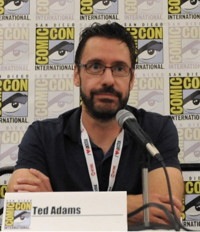
[Concluding our conversation with IDW publisher Ted Adams, we get into digital, new books for 2014 and IDW's plans for getting into the TV business. Read part one here. ]
THE BEAT: Ted, you were something of a pioneer among comics publishers for going into digital and I quote what you told me when I first asked you about it. You said “I’m just going to do a deal with everybody and see what works,” as opposed to everyone else who was like “Oh I don’t know if we should try this, we don’t know, we don’t know, don’t know.” Your attitude was, let’s give this a shot. I think the first time you gave a figure, you said, oh digital’s 1% of our revenue and our sales. Now I believe it’s 15%?
ADAMS: Yeah, and it’s growing even from there. And obviously I think it’s kind of our strategy in general. We were sort of out front [in digital] before everyone else was there. But my goal as a comic book publisher is to try and get my content in front of as many readers as possible. The best place ultimately for me to have long term readers is the direct market. But I want to try and get the content in front of as many readers as I possibly can, so I felt like digital seemed like a pretty obvious place to get our content in front of people who didn’t know comic books existed. But that’s really our strategy. That’s what drives the Fun Packs, that’s why there’s the toys and Transformers comics, that’s why we’re still agnostic when it comes to E-readers. Every legitimate opportunity that comes by, we’re going to put our content there, with the hope being that we’re going to introduce new readers to comic books and then drive those readers to comic book stores. That’s our path to success.
THE BEAT: Let’s talk a little about the comic shop market because, again, in 15 years, it’s really evolved a lot, even just the makeup of the retailers. I can tell you from personal experience that in the ’90′s when I was working with Friends of Lulu, we went to retailers and said “Why don’t you promote The Simpsons comics? People like The Simpsons.” And this was a very controversial message at that time! But now it’s “Oh My Little Pony! That’s awesome!” Everyone’s feeling pretty good about where it’s at now, but what is the next level for comic shops?
ADAMS: I think that the diversity that we have today is as good as it’s ever been and I think that we want to have content that can appeal to a wide variety of readers and not just one specific reader. The industry for a long time was really good about producing content that was just for one particular kind of reader, but today we have comics for kids. We have people who like super hero books. We have great, smart comic books like Locke and Key if you’re really into that. If you’re interested in the archival side of the business the Library of American Comics and Craig Yoe for us, we’ve got that nailed. The Artist Editions bring in a completely different kind of reader and I think that diversity that you can see in a micro way with IDW—where we have everything from licensed books to creating our own books, archival books, artist editions—that diversity is what we should all aspire to for that success. We don’t want to limit ourselves to just a small percentage of readers. We want to try to appeal to as big a percentage of readers as we possibly can.
THE BEAT: Talking about expanding the market place, you also have launched a TV division?
ADAMS: Yeah, so we started IDW Entertainment towards the end of last year, last September, October. The goal of that division is that I was frustrated by the way the traditional Hollywood system works where you have a property and then you option it to a studio and you are removed from the process in every way. For us probably the most frustrating experience was actually Locke and Key where we had a deal done and the pilot got shot and it was actually a pretty good pilot and ultimately they did not set it up to go to series. We of course, weren’t involved in any of that decision making. Creatively we were a little bit involved. They certainly were soliciting input from the creators. But from a business stand point we weren’t involved at all because why would we be? We’re not the network, we don’t have any say in any of that. [Locke and Key was eventually passed on as a series.] What we decided to do was actually, to put our own money into the game, which of course, then gives you the control. What we’re doing is actually financing pilot scripts and series outlines ourselves so that instead of going and saying we’re going to shop you the property, we’re shopping you the entertainment.
Once we have a pilot script and a series bible we want to proceed with, we’re not going to a network and saying “We’re selling it to you.” What we’re saying is “We’re going to give you specific distribution rights for this content.” So in the case of one of our properties, we’ll go to a US network and say you can have domestic distribution for this property. Then we’ll go out and sell the rest of the world the same content. Essentially we’re going to go and actually produce the shows ourselves and sell off specific pieces of the rights to be able to finance that show. Then whatever the gap is on that production budget, we’re actually going to finance ourselves. So we’re going to own the show [we’re creating] and we’re going to finance the actual show. It’s a different way—this has been done in a big way for features, but as far as TV, there’s not to my knowledge anybody doing it specifically the way that we’re doing it. And so it’s a pretty revolutionary way of looking at it. The response so far has been great. Certainly the creative community is excited because now there’s a new buyer for scripts and somebody that’s willing to pay. And then from a distribution standpoint, we’re taking the financial risk. So if you’re a US network and we come to you and we say hey, we’re taking the majority of the risk here, it’s a good opportunity for them as well.
THE BEAT: Also, there are so many different channels and delivery methods now for TV.
ADAMS: Right, and that’s the whole reason we’re doing it. Many times even when we call it a TV show, you’re not watching it on your TV.
THE BEAT: Right, Amazon streaming series, blah blah.
ADAMS: Absolutely. There’s so many places that are interested in this kind of content. That’s really who we’re looking to have as our distribution partners, really not those traditional networks. For some of the things we are doing, we would look to traditional networks, but certainly we’re looking at way beyond that at this point. We’re still in very much the early days of getting this worked out. We’ve actually got a writer working on our first pilot script, we just finalized the deal with him. We’ve got two more where we’ve come to terms with the writer and several of those deals should get wrapped up in the next couple of weeks. This is very much a long term plan for us. One of the things that I love about publishing is that we can have an idea for a book and six months later or nine months later, it could be in the market. That’s certainly not going to be the case for IDW Entertainment. This is a long term play for the company that we’ll be looking at, best case scenario, probably end of this year or middle of next year we’ll be able to have our first show up and running.
THE BEAT: Now, you talk about developing properties and obviously Locke and Key is an example of a new series that was excellent and the readership reflected that excellence. But, it’s a little trickier obviously, selling a new property.
ADAMS: Yeah certainly, one of the things I’m proud of is that we, Locke and Key is a great book and it’s unarguably just a terrific book Joe [Hill] and Gabe [Rodriguez] are amazing creators. But, part of the reason that book was successful was because of the way we got behind it. We promoted that book every way possible and every opportunity possible. I think that was a really solid combination of a publisher that got behind a book and two creators who were working at the absolute top of their game, and it was successful of course for all of us. The last volume was the New York Times best seller for the last two weeks and I expect to be selling those books for the rest of my life.
The creator-owned side of the business is a very important part of our business. This year we have four books that were launched that I think all have a chance to be big hits for us. The first one is V Wars which is by Jonathan Maberry and Alan Robinson. We actually did a Free Comic Book Day book for V Wars. It spins out of a series of prose novels that we’re doing that were edited by Maberry. It’s a terrific comic and the orders for the FCBD edition were great, way more than I expected. So it’s been in a big launch there.
We’re following that up with WinterWorld, which is a book that Chuck Dixon published with [Jorge] Zaffino with Epic back in the 80′s and we republished it. It’s a hard cover, one of my favorite things that we’ve ever done. And Chuck is now doing a new WinterWorld series with Butch Guice doing art, and it’s just flat out beautiful. It’s really an extraordinary comic.
And then after that we’re doing Ragnarok by Walt Simonson which is something that we’ve had in the works for a long time. I grew up reading Walt’s Thor comics and the pages that I’ve seen from Ragnarok are just, they’re just beautiful. It’s just going to blow people away.
THE BEAT: That’s kind of a no brainer right there.
ADAMS: We’re releasing one new series per month starting in May and the last one is Little Nemo in Slumberland which is written by Eric Shanower, and drawn by Gabriel Rodriguez of Locke and Key. I feel like I’m a broken record here, but Gabe’s art on this book is unbelievably beautiful. So it’s these four books and we’ve got lots of other great books, but those four launching May, June, July and August are going to be amongst the best books that are being published this year.
So those are things that we’re passionate about and that we’re supporting in a big way starting with the V Wars for FCBD. We’re going to get behind these books in a big way. One of the things that we’re announcing today at ComicsPRO is that we’re going to create marketing collateral packages for the direct market. So these are going to be catalogues that stores can give away, they’re going to be window clings, posters—basically what we’re going to try to do is give the direct market the information they need to be able to sell these books to their customers. So instead of just taking the Previews and and letting that be the only communication that happens from a retailer to their customer, we’re going to give them information they need and marketing collateral they need to build to help sell these books.
THE BEAT: Looking towards the future, obviously there’s this whole Tumblr culture of comics now, there’s webcomics, there’s the Reddit culture of comics. I don’t know if you’re aware, but I’ve been having Brett Schenker. who does demographic research on Facebook, write about comics. And he came up with something like 24 million people have liked comic-related terms on Facebook. Obviously there is a larger audience or at least a comics-aware audience, that’s a pretty big universe, but it does seem like it’s developing. It’s spinning out into all these unexpected areas. For all media now it’s really like, oh my god there’s so many channels, there’s so many ways to do things. How do you as a publisher look at this kind of Wild West situation that we have now?
ADAMS: I love those articles that you post, because it reinforces what I keep trying to say over and over and over which is that all of us it’s just tapping a small percentage of the potential of this audience. The potential audience is gigantic and it’s on us to figure out ways to provide our content in a way that can reach those people. And so for us it’s the Ebook business, it’s the Fun Packs, it’s the comics and the toys. But as far as Tumblr culture and all those kinds of places, I mean, honestly, we’re all still figuring it out, I think. Clearly every publisher at this point has a good Facebook page and has somebody that’s in social media, if you don’t have a social media marketing person at this point then you’re sort of hopeless.
But there’s so much more than just that. And I certainly don’t have the answer on how do we convert those 24 million people into customers. That should be a goal for all of us, but you said it was the Wild West and I think that’s exactly right. Anybody who’s a comic book publisher should get up every day and think, how do I reach those people? How do I convince those people to buy my content?
THE BEAT: Just a couple more things I wanted your perspective on. Comic Book convention culture is huge right now. I know IDW is very selective about the shows you go to. How do you view that? Is it something that you think is expanding for publishers? I’ve heard other people say that publishers are really getting burnt out on all these conventions.
ADAMS: I’ve always personally struggled with the conventions because they are so disruptive to our core business. I’ve toyed with the idea the last couple of years of hiring a couple of people that would, essentially, just attend conventions for IDW and I’m still toying with that idea. We have increased the number of conventions that we attend over the last couple of years, but we’re still probably looking at six or seven conventions this year. We do some of the targeted conventions, such as a Transformers convention called BotCon that we go to; and there’s one for G.I Joe as well, and we’ve actually have had great success converting new readers at BotCon. Those are the hardest of the hardcore Transformer fans, but even with those guys sometimes they don’t know the comics exist. We had really good success converting people from those shows. At the other conventions…I don’t know, Heidi. I see this huge expansion of the number of conventions and the reality is we’re going to always have to be selective because there’s no way we could come even close to attending them all. But it is something, frankly, that we could do more with and we could do a little better. I think that we’ve gotten very dialed in on how to manage San Diego and that was something that I struggled with for a long time, but I feel like we really have got that convention nailed down in large measure thanks to Dirk Wood who joined us four years ago. But as far as our bigger convention strategy, it’s something that I’m still thinking about.
THE BEAT: So looking to the next 15 years, what’s the one thing that you haven’t done that you really want to do, Ted?
ADAMS: Let’s see. I’m going to publish an adaptation of Hunter Thompson’s Fear and Loathing in Las Vegas—that’s a personal goal of mine that I’m looking forward to accomplishing. As far as the business, for me it’s, and again I’m a broken record, but I want to expand the number of people who read our books. So I feel like I haven’t even come close to accomplishing that goal and I feel with the Fun Packs in particular, that we are right on the cusp of going from half a million copies to 5 million copies. And not in an artificial way, like the heyday of the direct market when people were buying 50 copies each. I think that we can go from 500,000 Fun Packs to 5 million Fun Packs with unique readers for those, and not people who are buying them because they think they’re going to sell them in 3 years. But that’s just one example of what my goal would be for the next 15 years. I don’t want to just double the number of people who are reading our comics, I want to have a multiple of that number of people reading our comics.
Blog: PW -The Beat (Login to Add to MyJacketFlap)
JacketFlap tags: Interviews, IDW, Top News, ted adams, Add a tag
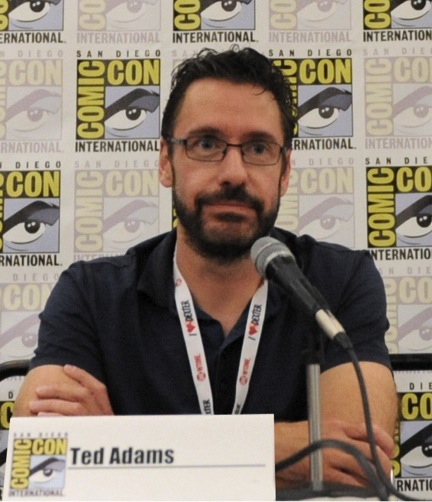
[IDW publisher Ted Adams is one of the most personable executives in the industry, and one of the most forward looking when it comes to expanding to new markets. As IDW celebrates its 15th anniversary, we chatted with Adams about the structure of the company, his background and how IDW has explored new outlets and products including digital, mass market and merchandising. One of IDW's biggest recent success stories in their "Micro Fun Packs"�little goodie bags sold at mass market checkout areas which include a mini comics, stickers, foldout posters, and POG-like collectibles—an unusual move into merchandising for a comics publisher but one he thinks will drive readers back to comics shops. IDW's successes also includes creator owned books like 30 Days of Night and Locke and Key and one of the industry's best archival programs with the Library of American Comics and Yoe Books. Given his background in the maw of the "indie comics era" working at Eclispe, Dark Horse and Image, Adams has been able to put what he calls his entrepreneurial spirit to work on taking advantage of the expanding audience for comics. And he's not done yet. Many thank to IDW's Rosalind Morehead for setting up this interview.]
THE BEAT: Since we’re doing a 15-anniversary look back, I wanted to ask you if you if you could lay out kind of the structure of IDW. I know that you started it with some partners and then IDT came in as investor — can you just talk about who’s still involved and what their roles are?
ADAMS: Yeah absolutely. I started IDW with three other guys in 1999 and when we organized the business we each owned essentially 25% of the business. So there were four of us who owned 25% and that continued on for quite some time. In the early days of the business actually we weren’t a comic book publisher, we were just a creative service company that was doing art and design for a variety of entertainment companies. And so for the first probably 3 or 4 years of IDW it was just the four of us and a handful of employees. We really started with an art book by Ash Wood and that led us to doing 30 Days of Night and CSI comic books. That was around 2001-02 was when we were first starting to publish comic books. But it wasn’t really until probably 2004, 2005 when our publishing business started taking off, around the time we picked up the Transformers license, and really started to expand our publishing business. (Editor-in-chief) Chris Ryall came in and really helped us build that business. IDW was transitioning from a creative service company to a publishing company probably around 2004 -06 Two of the partners, Alex Garner and Kris Oprisko I think frankly weren’t all that interested in being involved in the publishing business; the business was growing quite a bit and they had other things that they wanted to do. So we decided to figure out a way for them to sell what they owned in the business so they could move on to other things. We met the folks at IDT [a telecommunications company that owns such hings as tghe ringtones portal Zedge] and at that time we sold them half of the business. Over time they brought out Kris Oprisko completely. So IDT owned 75%, and Robbie Roberts and I owned 25%.
THE BEAT: Right, but IDT seems to be very much a silent partner at this point?
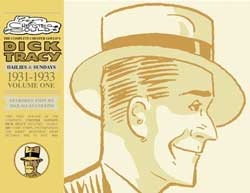
ADAMS: Very much silent, yes. They’re very happy with the success that we’ve had and certainly we’ve had tremendous growth, sort of unbelievable growth since they bought out the other partners. Certainly they’re there if we need advice or we’re looking for their opinion on something, they’re certainly there to give us a hand. But they don’t know the comic book business or the publishing business and they allow us to be the experts that we are.
THE BEAT: Well, that’s a pretty good deal.
ADAMS: Yeah, it’s been really nice.
THE BEAT: I was going to ask you, in 1999, I know you started as a packaging company, but that was really the darkest days of the comics industry, in the post newsstand era.
ADAMS: Well yeah. To be perfectly honest, I was really burnt out on comics. I started at Eclipse and I worked for Dark Horse, I worked for WildStorm and then when we were starting IDW I was working for Todd McFarlane running his comics line and I was unbelievably burnt out on comics. So when I put together the business plan for IDW it actually, specifically called out that we wouldn’t publish comics. [Laugher] The industry was kind of in a low spot, I was really burnt out on doing it and so it’s funny that here we are today. But the reason that we didn’t want to become one wasn’t necessarily because the market was in a lull, it was more just my personal passion was at a low peak at that point.
THE BEAT: But, I think you were feeling what a lot of people were feeling at that point. I think sales had fallen it was either ’98 or ’99 when the best selling comic was 75,000 copies. I think a lot of people were just like, wow, we built this direct market and this is the best it can do?
ADAMS: You’re right, I mean it was just such a—from the peak to the valley was such an extreme. You know, when I was working at WildStorm—and I wasn’t at WildStorm in the earliest days—but even when I was there comics were still selling 400,000, 500,000 copies and certainly anything under 100,000 was seen just as an abject failure. And to go from that to having the best comic be 75,000 was you know, the extreme was unbelievable.
THE BEAT: Working for Eclipse, Dark Horse, WildStorm, among all comic publishers you have this background where you must have seen a lot of things that worked and a lot of things that didn’t work in those times.
ADAMS: Yeah, and I think I’ve always been entrepreneurially focused and I always knew I was going to own my own business. And so my education, both my undergraduate degree and my graduate degree, are both in business and so I knew I was going to eventually own my own business. I didn’t necessarily know I was going to own a comic book business. But, when I was working for all those various publishers they were all really entrepreneurially driven as well. If you look at Eclipse and what Cat [Yronwode] and Dean [Mullaney] were doing, those were really revolutionary publishers and their entrepreneurial approach to comics I really learned a lot from them. Mike Richardson, in the same way. I’ve never met anybody who has a bigger vision than Richardson. I mean he’s always is shooting for the stars and often accomplishes it. And Jim Lee and John Nee at WildStorm, those guys were a duo that I don’t know I’ll ever see again. Jim, you still see it with DC, his ability to recognize what the market wants and the way to get the market excited. I don’t think there’s anybody else who has that clear sense of what works in the direct market the way that Jim Lee does. And John was able to execute his ideas perfectly. And certainly Todd knows exactly what he’s going to do and nobody’s going to get in his way and, God bless him, he’s had great success. I tried to learn from those guys and figure out what I thought worked and didn’t work and sort of apply that to IDW. Particularly as we’ve grown, I’ve tried to recognize the things that I thought had worked at the various companies where I’ve been and apply those, and the things that didn’t work, I’ve tried not to do.
THE BEAT: That must have been a great education.
ADAMS: It is yeah. I had my sort of traditional college education but then my work education and I am created to be a comic book publisher, there’s no question.
THE BEAT: Well, that said, with your own personal interest in the comics business at a lower ebb one day you turned around and suddenly you’re like, you know what? I think publishing comics was actually a good idea. [laughter] What was that moment?
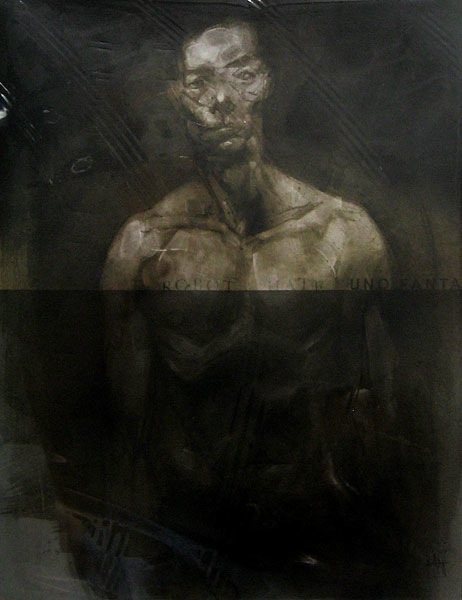
ADAMS: Honestly, publishing is exciting. I’ve loved books my entire life. Not just comics, but all books. And so I’m just a reader. I read all the time, that’s what I do for entertainment and again not just comics, but I read everything, lots of fiction, lots of nonfiction, I read comics. The thing I like most in life is reading. Being a publisher and being able to hold the book that you brought into the world, that feeling is hard to describe to somebody who is not that passionate about reading. And so for me when we did our very first book, which was Uno Fanta with Ashley Wood, I was crazy proud to have published that book! I can’t even tell you. I’d had my name on, at that point, thousands of comics and books through my various jobs, but having brought a book to the world that didn’t exist before was the sort of high that I hadn’t experienced before. There was almost no money to be made with that book, certainly in the early days of IDW, but that ability to bring a book to market was just something that—it was truly like a drug to me. And I still feel that way! Our printer brings us advanced copies every Thursday and no matter what I’m doing I drop it and go and get the pack that we just published and I sit there and I go through them all. I see things that I like and things that I don’t like about them. But, that high from being able to look at those books and say if I didn’t exist these books likely would not be here, that’s a really good feeling.
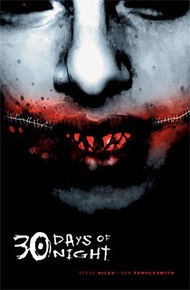
THE BEAT: When you got back into the game with IDW, as I said it was at a low ebb but now I think we’re at what nearly everybody agrees is a golden age. Whether it’s the new material or the archival material. You guys are doing some absolutely ground breaking dream projects, between the archive editions and Library of American Comics. What do you think got us from the dark period to the golden age? Are there any key factors that you can identify?
ADAMS: I think the key factor is that the quality of the material got better. I think when we were at our lull the industry was also at a creative lull and I think that the industry has really raised its game from a creative standpoint. We’ve done that as well. When we were first starting to publish comics books, they frankly weren’t as good as the books that we’re doing today.
If you look at the licensed books that we did when we first got into the game versus the licensed books that we do today, they just weren’t as good. And there’s that stigma that’s associated with a licensed book that I’ve never really understood. I think it’s starting to go away. Our Teenage Mutant Ninja Turtles book is regularly on weekly Best Of lists. It was on a bunch of end of the year Best Of lists. The Godzilla book that we did with James Stokoe was critically acclaimed; the Transformers book that James Roberts writes for us is well received not just by people who like Transformers, but people who like well written comic books. And certainly if you look to our creator owned things like Locke and Key and the books that we’ve done with Steve Niles and Ben Templesmith and Ash Wood—those are all really good comics. We got past that stage where the one thing that was driving the sales was gimmicks and it got to a stage where people were buying books because they were actually reading these books and enjoying the books.
THE BEAT: I guess in a way it’s kind of like everybody had to go through that crucible. People who stuck with comics, certainly it wasn’t easy money at all, it was a struggle. I think it was just the love of it that people stuck with and I think that kind of reignited the passion and the quality that you’re talking about.
ADAMS: Yeah, I think also the expansion of the direct market—I’ve been out there saying this for a long time but I really believe it to be true—what happened with the Ebook versions of comic books was unique in that it actually expanded the audience for those books in a way where people were seeking out the physical books. That certainly wasn’t the case for your local newspaper or for magazines or even for traditional print books, but comic books I think what happened there is that they’ve introduced comic books to people who didn’t know they existed and so some of them people then searched out the physical books in the direct market. I think it also reengaged people who had lapsed from the hobby. So you know if you look at, as you’re saying, ’99 where we were kind of in a lull, lots of people three years before in ’95, ’96 when there were lots of people reading comics, they all went away. Ebooks reengaged a lot of those people and brought them back into the market.
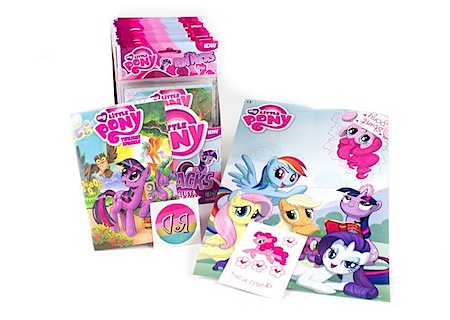
One of the things that I’ve been talking about, that I’m really passionate about is trying to figure out ways to introduce comic books to new readers and then redirect those readers into the direct market. Most of us figured out comic books, we got it at our 7/11 or our newsstand and eventually fell in love with the medium and we became direct market customers. And I think at IDW we’re very unique sin being able to expand the market in that way. We’ve been doing things like the Micro Fun Packs which are miniature comic books. We had really broad distribution of the Fun Packs so they were at every mass retailer—WalMart, Target, Toys R Us—and our sell-through was crazy. On the first Fun Packs our sell-through averaged about 60% at mass which is unheard of for any product. It’s an extraordinary sell-through. And that Fun Pack has marketing collateral to back, it drives people to the direct market. So if you’re a mom and you picked up these Fun Packs to put in your kids stocking for Christmas and the kid likes it, they’re not going to go back and get more fun packs, the only place really to get that content is through the direct market and our marketing collateral in there is very clear about that.
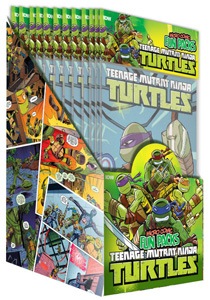 We also have comic books in the Transformers toys and it’s the same thing there. If you like that comic book, you got the Transformers toy as a gift for Christmas, you didn’t expect to get the comic book, it’s just a freebie in there. You read it, you liked it, the back of that comic book completely drives you to the direct market. If we’ve done our job right it very clearly explains to you, should you like this comic book, here’s the next thing to buy and here’s the place to buy it. We’re really focused on trying to expand the direct market in that way. I read the thing that Eric Stephenson said at ComicsPRO today and obviously, for whatever reason, he decided to take pot shots at us, but Eric seems to think that you can only expand the market by publishing books that Image publishes and that’s a really narrow minded way to look at it.
We also have comic books in the Transformers toys and it’s the same thing there. If you like that comic book, you got the Transformers toy as a gift for Christmas, you didn’t expect to get the comic book, it’s just a freebie in there. You read it, you liked it, the back of that comic book completely drives you to the direct market. If we’ve done our job right it very clearly explains to you, should you like this comic book, here’s the next thing to buy and here’s the place to buy it. We’re really focused on trying to expand the direct market in that way. I read the thing that Eric Stephenson said at ComicsPRO today and obviously, for whatever reason, he decided to take pot shots at us, but Eric seems to think that you can only expand the market by publishing books that Image publishes and that’s a really narrow minded way to look at it.
THE BEAT: Well that’s his method, to be fair.
ADAMS: Right, and what he did has expanded the market, no question, but Image Comics is not the only way to expand the market, clearly we’re out there doing our part as well. I’ve spoken to I can’t even tell you how many comic shops at this point and been in lots of comic shops all over the country and My Little Pony has brought lots of new readers into comic stores. And the stores that have embraced My Little Pony have found a nice new audience for themselves in the same way that I grew up when I was reading comic books. I started with Spider-Man and very traditional Marvel comics and then moved on to Eclipse and Dark Horse.That should be our goal. We want to get people reading comic books first of all and then of course they’re going to expand as they grow and age and their interests change, they’re going to try different things and sample different things. But it’s really narrow minded to say that the only way to expand the market is with Image Comics.
THE BEAT: Let me ask you about going into mass market, Target, WalMart, Kmart—some of them are barely even mass anymore actually—but you must have heard, as I have things like the key to saving comics might be this, like getting in to record stores or bookstores and getting into Target and WalMart. “Oh if we can only get in to mass!” But it isn’t that simple, is it? What have your experiences been?
ADAMS: What we’re doing with the Fun Packs is so unique because we’re not trying to sell that product where books are being sold. Because the truth is, the kids aren’t going into the bookstore section at Target. No 10-year-old is going and hanging out in the bookstore section at Target! But they are hanging out in the trading card and tchotchke section at the front of the store. It’s clearly aimed at kids. And so that’s why our contact product is so clearly defined to be able to reside in that space and be something that looks like it fits in that space, so that a kid who’s going to go and get a My Little Pony trading card pack might decide oh I’m going to try the comic fun pack instead. That’s our whole goal there. I agree with you completely that the dream of finding new readers by selling graphic novels in the book section at Target is a false hope—it just doesn’t work. But what we’re seeing with Fun Packs is working.

The other place that I think is a great feeder system for comics but doesn’t get talked about much is the Scholastic book fairs and book clubs. We’ve had tremendous success with them over the years, most recently in the current Scholastic catalogue there are three IDW products, My Little Pony, Transformers and Teenage Mutant Ninja Turtles. One each of those books in the current catalogue. I just got the sell through on those and it’s also extraordinary, it’s through the roof. And it’s the same thing, if a kid gets a Transformers graphic novel through this Scholastic book club and likes it he’s not getting anymore through the book club. The only place for him to go is either to his Ebook device or the direct market. And I think that there’s no question that that has to be a good feeder system for comic shops.
THE BEAT: Can you give us any numbers on the sell through of these? Because I totally agree with you. Scholastic book fairs are kind of another holy grail actually, but they’re a holy grail that seems to work.
ADAMS: Oh it actually worked. We’ve been selling to them for years.
THE BEAT: That’s what I like about you Ted, you’ll give us an actual number!
ADAMS: They’re actually looking to be completely sold out by summer. So you’re talking about virtually 100% sell through in significant six figure quantities for all three of those books.
THE BEAT: There’s my headlines for this interview! I was just looking at the BookScan end of year came out and Brian Hibbs had his analysis of it. It’s amazing that even with all the difficulties of book publishing, that this market is still growing is incredible.
ADAMS: BookScan is weird because I’ve never been able to wrap my head around BookScan to be honest with you. Anytime we’ve done a BookScan on one of our books it just doesn’t reflect reality, not even close to reality. It’s so off that I’m just not sure, I don’t know where they’re sourcing information. So I stopped giving any credence to BookScan years and years and years ago. I know what our sell through is and then I can look at the BookScan and they just don’t match up at all.
THE BEAT: Interesting. I always say in places that report to BookScan this is what sold, but this is not what sold everywhere. But talking about the Scholastic numbers, I think it’s important for people to know that you could sell six figures of a graphic novel if it’s the right material and it’s in front of the audience that it’s aimed at, especially kids.
ADAMS: Even the Fun Packs are in the hundreds of thousands [of units.]
THE BEAT: Whoa.
ADAMS: Those are real big numbers. I would guess the month that we released the Fun Packs that we outsold whatever the best selling direct market comic books significantly—I wouldn’t be surprised if it was probably 2 to 1.
[In part two, more on digital and what's coming up for IDW in 2014.]
Blog: Galley Cat (Mediabistro) (Login to Add to MyJacketFlap)
JacketFlap tags: Comicbookland, David Ozer, Rick Jacobs, Ted Adams, Add a tag

Comic book and graphic novel publisher IDW Publishing has launched IDW Entertainment, a division of the company that will develop television work inspired by the company’s collection of more than 300 original properties.
Television executive David Ozer will serve as publisher of the new division, working alongside publisher Ted Adams. Here’s more from the release:
A key focus for the division is the financing, development and production of television series with the goal of securing straight-to-series commitments from networks. Ozer’s background includes executive level roles at Sonar Entertainment, Starz Media/IDT Entertainment and DIC Entertainment …. Circle of Confusion, Executive Producer of the hit AMC series The Walking Dead, will oversee packaging and creative development of the division and will executive produce the company’s projects. Rick Jacobs will continue to run point on these efforts.
New Career Opportunities Daily: The best jobs in media.
Add a Comment


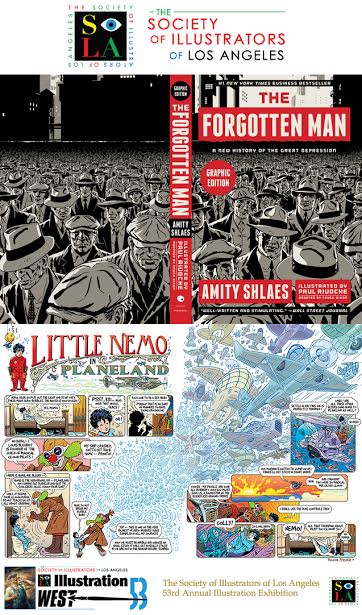




As excited as I am for the new “Frozen” short next month (hey, I have a six year old daughter!), couldn’t Disney have spared an extra light or two for that video? I mean, just put an iPad underneath Jennifer Lee’s face or something. That might have been enough light so we could see her talk…. backlighting is great and dramatic, but you still need a ratio of light from the front so we can see the people talking!
End of rant. Thanks.
They’re doing Walking Dead #1 variants still? Wow.